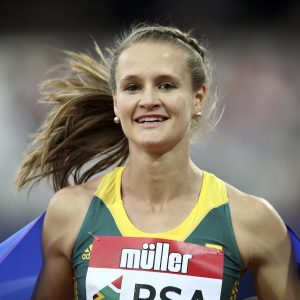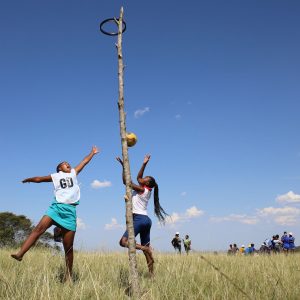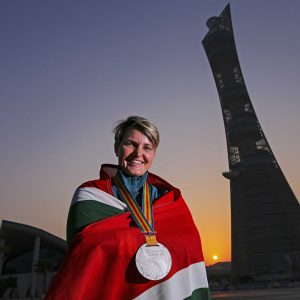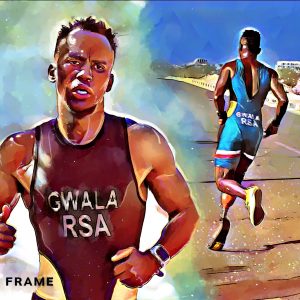Covid-19 claims sprinting legend Milkha Singh
Having lived through the trauma of violence during India’s partition, the revered athlete came to symbolise what it means to run for one’s survival and to win against all odds.
Author:
1 July 2021

Milkha Singh, one of India’s most iconic male sprinters whose fast legs dominated track and field events in the 1950s and 1960s at the Asian and Commonwealth Games, has died after a month-long fight with Covid-19. He was 91.
An orphan who was displaced during the partition of British India, Singh is remembered for his indomitable spirit and perseverance in overcoming personal tragedy and trauma. He became an Olympic sprinter, setting several records and earning numerous medals throughout his career. In 1959, he was awarded the Padma Shri, India’s fourth-highest civilian honour.
Known to generations of Indians as “The Flying Sikh”, Singh was a two-time Asian Games winner in the men’s 400m and finished fourth at the 1960 Rome Olympics, when the top four finishers all smashed the world record. Singh completed the race in 45.73 seconds – a national record for over 40 years until Paramjeet Singh broke it in 1998.
Related article:
Singh was diagnosed with Covid-19 in May and treated at a hospital in the northern city of Chandigarh. He died on 18 June after experiencing symptoms such as fever and decreased oxygen saturation levels. Singh died just five days after his wife, former women’s national volleyball team captain Nirmal Kaur, also died of complications related to the disease.
The athlete is survived by his golfer son Jeev Milkha Singh and three daughters. He was cremated with full state honours and Sports Minister Kiren Rijiju and Punjab governor VP Singh Badnore were among those who attended the last rites.
Prime Minister Narendra Modi said the country had “lost a colossal sportsperson” and that budding athletes would derive strength from the sprinter’s life story. President Ram Nath Kovind said Singh’s death filled his heart with grief. “The story of his struggles and strength of character will continue to inspire generations of Indians,” he wrote on Twitter.
Running from violence
Singh’s tale is one of courage, persistence and devotion as he catapulted India on to the international track and field stage, which historically had not been the country’s forte at the Olympic Games. He was born in 1929 in Govindpura, a small village in the Muzaffargarh district in modern-day Pakistan.
His father Sampuran Singh was a subsistence farmer whose last words to his son were “Run, Milkha, run!” And the young teenager ran through the fields to save his life during the communal violence that had engulfed his native village in the wake of the Indian subcontinent’s division in 1947. This story he recalled in his autobiography, The Race of My Life, which he co-authored with his daughter Sonia Sanwalka.
Singh lost both his parents, two sisters and a brother to the partition massacres. Exhausted from days on foot escaping the violence, struck by the enormous grief of losing his loved ones and startled by the colossal devastation around him, he fell asleep on a train that took him to India. After wandering around for days and living in a refugee camp in Delhi, he found some relief after discovering that one of his sisters lived in the city.
Related article:
In the initial years, Singh struggled to find direction in life. He tried to join the army in 1949 but was rejected several times. He briefly worked as a mechanic and in a rubber factory, which had a negative impact on his health. Finally, in 1952, he secured a job in the army and was sent to the Corpse of Electrical and Mechanical Engineers.
It was in the army that Singh improved his running skills. In one training session, he was asked by Havaldar Gurdev Singh – a former athlete who was appointed to train young army cadets – to run a cross-country race. Running in such an event for the first time, he finished sixth out of the 400 soldiers participating. Impressed by the grit of his Sikh protégé, Gurdev Singh hand-picked him for further training and motivated him to work towards becoming a world-class athlete, thus laying the groundwork for Singh’s long and successful career.
He took training seriously and worked for five to six hours daily. He often ran barefoot, even when he participated in the army meets, and his running drills were regarded as a sort of self-imposed penance. In his own words, the training was so intense that he often vomited blood and collapsed from sheer exhaustion.
Phenomenal performances
Singh showed his prowess for the first time at the 1955 Services Athletic Meet, where he finished second in the 200m and 400m dashes. But it was his victory in the 400m at the 1956 National Games in Patiala that brought him to the biggest sporting event, the Melbourne Olympics in Australia that same year. Just a novice, he exited early in the heats.
However, Singh approached 400m gold medallist Charles Jenkins of the United States and asked for his training routine, which the American generously shared. Singh, then 27 years old, followed Jenkins’ programme diligently for the next two years and began setting national records in the lead-up to the Asian Games of 1958, which were held in Tokyo, Japan.
In what was his first appearance at the Asian Games, Singh won gold in the 200m and 400m events. What made the 200m gold medal even more special was that his main competitor was Pakistan’s Abdul Khaliq, who had won the 100m gold with a Games record and was widely considered to be Asia’s fastest sprinter.
Related article:
Singh became a national hero after he won India’s first major gold medal in athletics at the Commonwealth Games in Cardiff in 1958. He credited the victory to his American coach, Arthur W Howard. “Before the finals, Dr Howard told me that he vouched for South African athlete Malcolm Spence for the title, who had good endurance but lacked speed. Dr Howard advised me to run the first 300m with full pace, because in an attempt to catch up Malcolm would exhaust most of his energy and in the next 100m would find it difficult to run. I did exactly that and scripted history,” Singh wrote in his memoir.
His crowning achievement came at the 1960 Olympics in Rome when he placed fourth in the 400m final, narrowly missing out on a medal. The race is regarded as one of the closest in Olympics history as the top four participants finished almost at the same time. When the results were announced, Singh had lost third place to Spence by the narrowest of margins, thus losing out on becoming the first Indian athlete to win an Olympic medal.
“All through my life, I have been tormented by the fatal mistake I made in Rome on the day of the 400m race. I knew that I could have won, but perhaps luck was not on my side that day. The one medal I had yearned for throughout my career had just slipped through my fingers because of one small error of judgement,” Singh wrote. “Even today, if I look back on my life, there are only two incidents that still haunt me – the massacre of my family during partition and my defeat at Rome.”
Becoming the Flying Sikh
In the same year, the then military head of Pakistan, General Ayub Khan, invited Singh to run against Khaliq once again, but scarred by the trauma of the partition, Singh refused. It was only after then prime minister Jawaharlal Nehru convinced him to go that Singh went to Pakistan. Khan was one of the spectators who turned up to see the two sprinters compete in the race, which Singh won. Handing him his medal, Khan told Singh: “You didn’t run today, you flew.” The moniker Flying Sikh stuck from there on.
The chief minister of Punjab, Partap Singh Kairon, persuaded Singh to leave the army in 1960 and join the Department of Sports of his native state, following which he served in various administrative posts.
Two years later, Singh won two medals at the 1962 Asian Games in Jakarta, Indonesia: one for his individual performance in the quarter mile and the other as a member of the 4x400m relay team.
Related article:
Although a source of inspiration for aspiring Indian athletes, he frequently referred to his defeat in Rome and regretted the loss of a chance to obtain an Olympic gold in athletics for India. “My last desire before I leave this world is that I want an Indian boy or a girl to win an Olympic gold medal for the country and for my sake,” Singh once told The Indian Express.In 2013, his life story was turned into the Bollywood film Bhaag Milkha Bhaag (Run Milkha Run).
The biopic was a runaway success. It starts at the 1960 Rome Olympics, where Singh, who leads the 400m race, drops to fourth place when he hears his coach shout: “Run, Milkha, run!” He is overwhelmed by the traumatic flashback to his father’s identical words as he was escaping a violent mob, and the memory puts him a split second behind the winners.




